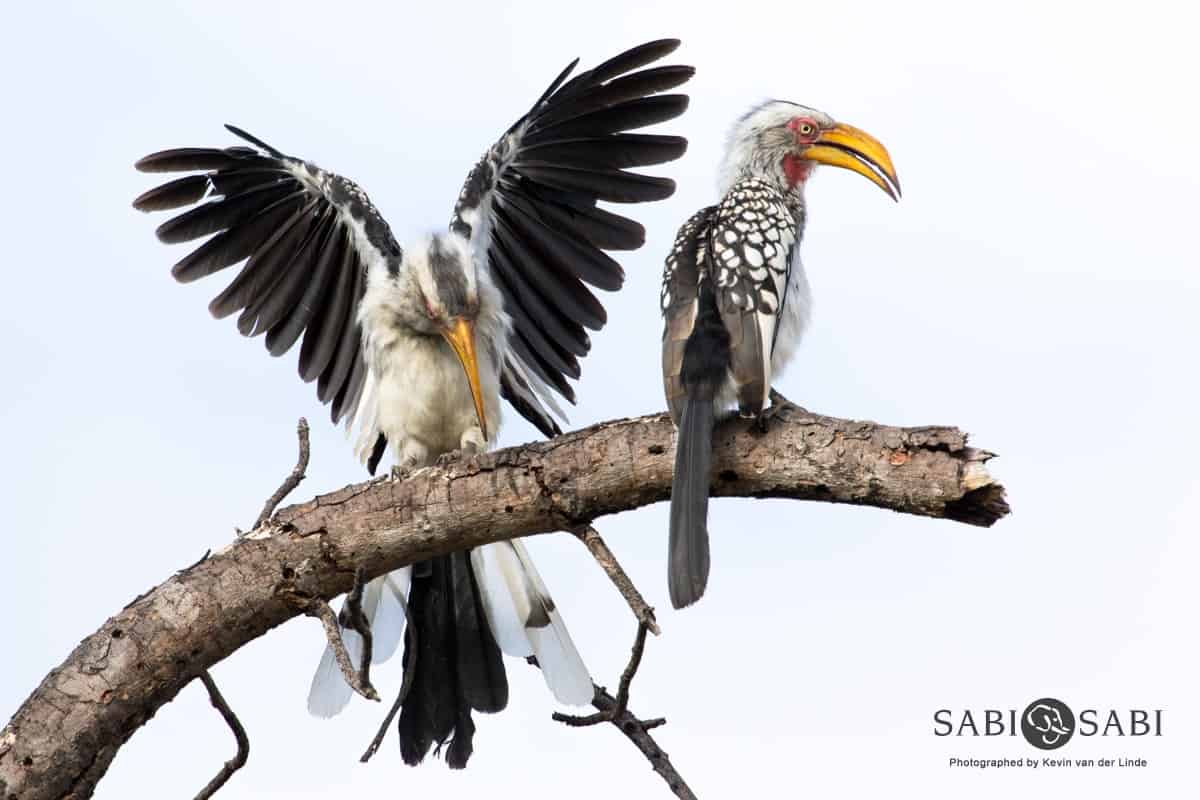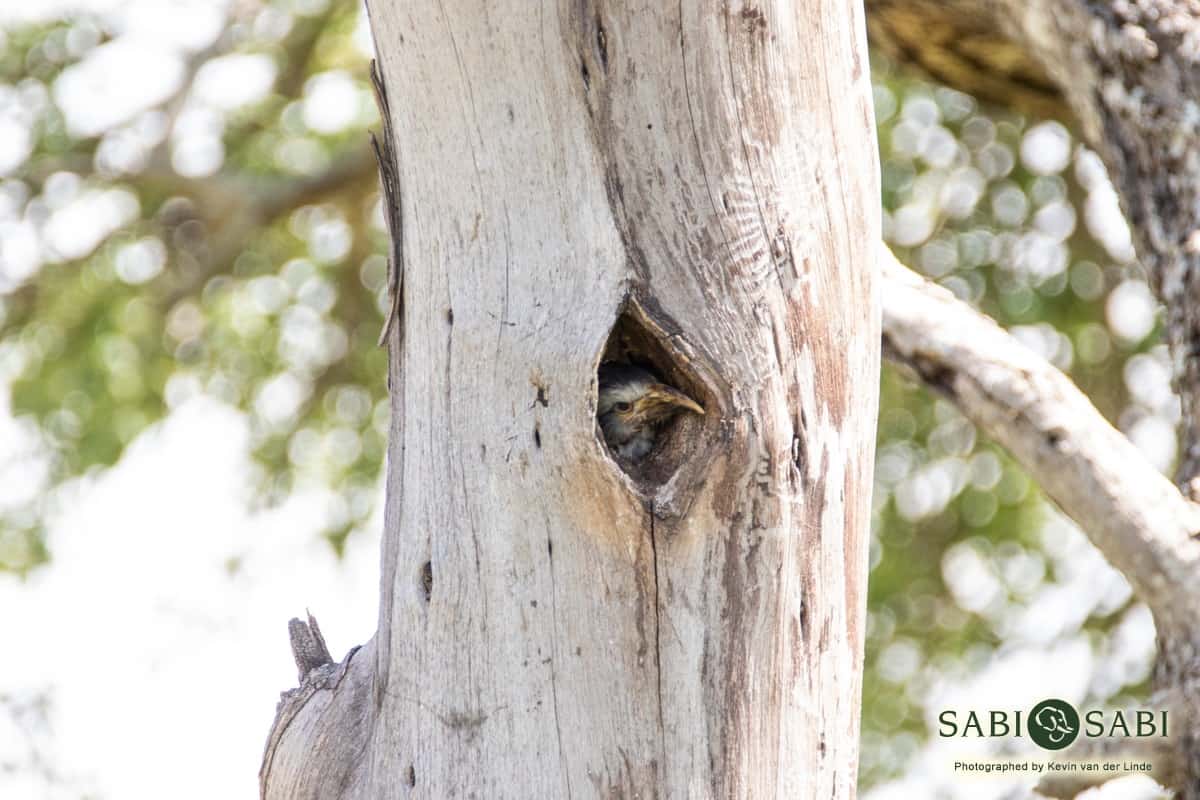Southern Yellow-billed Hornbill
on Mar 01, 2019Species name: Sothern Yellow-Billed Hornbill
Scientific Name: Tockus leucomelas
Weight: 132–242 grams
Size: 48–60 centimetres
General habitat: Mostly in the dry, open savannas, but they may also be seen in woodlands.
Diet: Arthropods, particularly termites, beetles, larvae, grasshoppers, caterpillars. Scorpions, small mammals, berries and fruit make up the remainder of their diet.

During your stay at Sabi Sabi, you will come across a wide variety of bird species, but one of the most notable species is the Southern Yellow-billed Hornbill, also referred to as “the flying banana” due to its large yellow beak. I can’t think of a part of the reserve where you will not stand a chance of coming across these eye-catching birds.
The Southern Yellow-billed Hornbill is active during morning, day and late afternoon. They are often seen on the ground, overturning foliage and large dung piles in the hope of finding a beetle or 2 which they grab with the tip of their beak, toss it up and catch it again to be swallowed. Their beaks also contain serrated edges to crush their meal. At night, they sleep in the trees to avoid being preyed upon.
During the breeding season, they are often seen in pairs, calling in a duet and synchronising their elaborate displays with their wings open and extended backwards while dropping their heads. They are a monogamous species and once a partner has been found and after mating, the male will stay with its partner and establish a territory that it will defend. They will scout around for a suitable nesting site which in most cases will be a natural cavity in a tree. When a nesting site has been found, the male proceeds to bring bark, leaves and grass which will be put on the bottom of the nest. During this time, the female will seal herself inside the nest by blocking the entry with a wall made from her droppings and food remains. The male will help by bringing mud for her to work with. During this time the female is dependant on the male to bring food back to her. The eggs will be incubated for a period of around 24 days. When the chicks are around 3 weeks old, the female will break the sealed entrance and head out to help the male bring food back and forth to the chicks.
My Memorable Sighting
The times spent with these birds are always special, but the times I enjoy the most are the displays of the adults, the bowing posture accompanied by their strange calls and swaying dance always brings a smile to my face and a little chuckle inside. Very entertaining.
Photo Content













